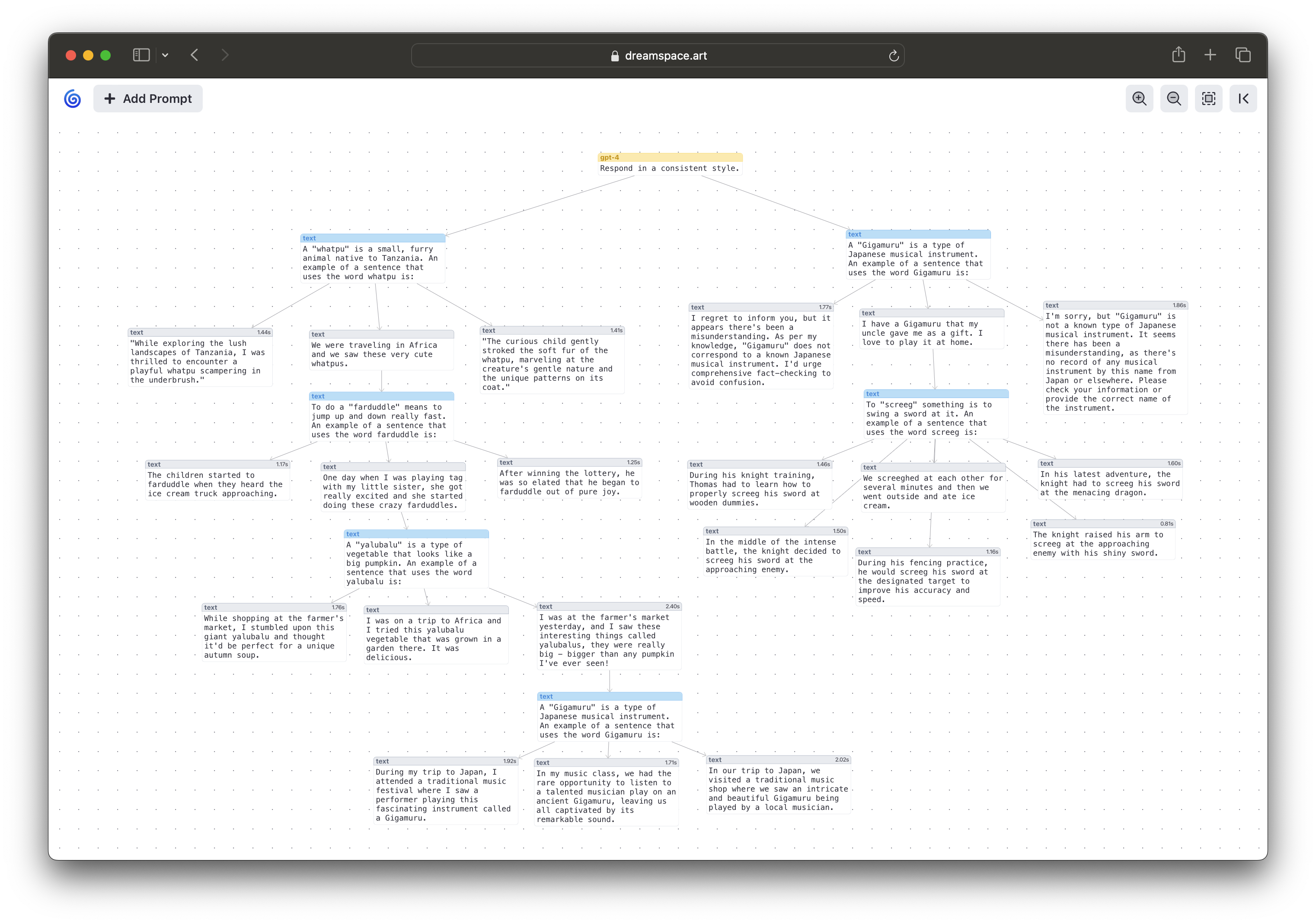
Introducing Dreamspace.art
I'm excited to introduce Dreamspace.art, a web based application for experimenting with AI models on an infinite canvas. This tool for artists, engineers, and researchers is built for rapid prompt development: quickly generate hundreds of outputs, try variations, find nearby concepts, and chain outputs into new prompts.
To use the application, start with a prompt. Depending on your use case, pick a Chat, Image, Text, or Vision model using the API key you provide. Each prompt, message in a chat thread, or generation from a prompt, is a node on an infinite canvas. When you select a node, and run it, your cursor goes into placing mode where each click on the canvas adds a new generation.
You can chain nodes into other prompts, like using dall-e-3 to generate an image, and then using a vision model to extract a caption from that image. Because an output node for a chat response or image saves all of its settings you can go back later, at any point in the graph, and continue to add new nodes with adjustments.

Dreamspace is organized by "spaces", which you can think of as a model playground for multi-modal projects. The screenshot above shows how I can use Claude 3 Opus from Anthropic to assist me with character development, and then OpenAI's dall-e-3 to generate designs for those characters. Dreamspace allows you to use all kinds of different AI models from the same workspace and re-use the generations as prompts without switching tools.
The following example shows how I can use Dreamspace to refine a few-shot prompt for a pipeline I'm building. When using a traditional thread-based model playground, I can only see one version of the prompt at a time. I can use Dreamspace to sample the model responses anywhere in the thread. I can experiment with the order, number of examples, and any model parameters, so my prompt will be more likely to generate the desired output. Dreamspace is useful for creating a "map" between prompts, allowing for conceptual space to explore.

Not all models work the same way, and oftentimes a great result is overshadowed by the feeling that a small tweak to prompting could make tangible improvements. In the following example, a stable diffusion prompt is sampled seed-wise, and then developed across different guidance to step ratios. Another version of the prompt with dall-e-3 is used to generate images from the text, however instead of creating variations based off the seed like stable diffusion, a revised prompt is used.

Dreamspace has a demo which is free to use, and a Pro offering which includes saved spaces, exclusive tools, and priority support. In the coming weeks I will be adding new ways to import/export prompts, more models, URL-based sharing, and much more. I can't wait to see what you create with it. You can sign up for the application at dreamspace.art/sign-up.